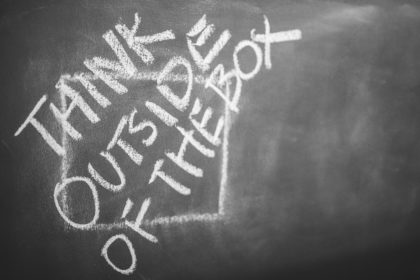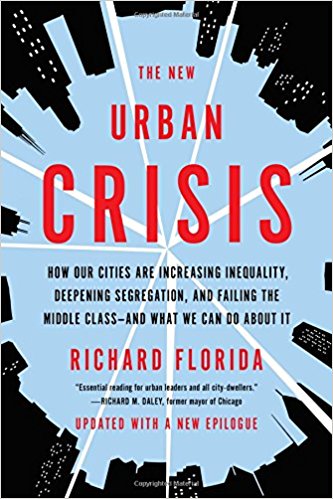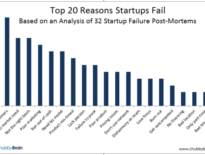
Many who follow me here or on Quora know that I’m a student of economist Peter Drucker. It’s Drucker who noted of the economy and business, that only two things create value: marketing and innovation – that everything else done is a cost of existing; that marketing and innovation create wealth, they create value while all else is a matter of delivering what’s needed so as to operate.
I’m wrestling with that thesis rather more frequently lately given my work in MediaTech Ventures and our mission to enable the Creative Class of our economy to thrive, by helping everyone keep pace with the implication of innovation.
The Creative Class: The creative class is a posited socioeconomic class identified by American economist and social scientist Richard Florida, a professor and head of the Martin Prosperity Institute at the Rotman School of Management at the University of Toronto. Among the creative class are the drivers of the new economy – creative professionals, specifically a “super-creative core” (including artists and designers) and “creative professionals” (including managers and lawyers). According to Florida, the creative class are a key driving force for economic development of post-industrial cities.
Think about the people who come to mind when you consider those individuals in our workforce: artists, musicians, film and entertainment makers, agents, developers, and the like.
You might be thinking, “how on earth are musicians driving the future of our economy?” but if you’ll give me the benefit of the doubt, and appreciate at least that the arts foster our culture – culture that seeds HOW we work – you might concede our interest:
Creating wealth requires marketing and marketing, today, requires a fundamental skillset with the internet – innovation. Innovation and marketing create value, not just for businesses but in individuals; and when a working professional struggles with either, they are less productive in our economy and challenged in gainful employment.
Simply put, musicians today need to be able to work with social media, blogging, self production, booking engines, and more if they hope to thrive. Rather, at least, NOT being familiar with those things puts such people at a working disadvantage.
Is the same not true of everyone?
Here I am teasing you with a headline about Diversity and Inclusion while focusing your attention on musicians. It’s my train of thought, and recent developments and discussions, that is steering a line of thinking that I’d like to explore with you.
Is the same not true of everyone?
In Austin, we’re struggling with the creative class. Musicians and film makers are barely scraping by while historically affordable homes and venues are turned over by more affluent groups. In effect, they’re experiencing gentrification.
 Much of the city is looking to “affordability” measures to force property use to a certain low-cost of living and I couldn’t help but scratch my head and wonder, how does affordability make any difference when our neighbors can’t even afford that? Gentrification is a challenge for every city in which there is a thriving economy, a good thing posits Florida, leaving me to wonder if gentrification isn’t the problem but a symptom of the problem – do people of all walks of life not struggle with thriving economies in which they can’t keep up with skills or access opportunity?
Much of the city is looking to “affordability” measures to force property use to a certain low-cost of living and I couldn’t help but scratch my head and wonder, how does affordability make any difference when our neighbors can’t even afford that? Gentrification is a challenge for every city in which there is a thriving economy, a good thing posits Florida, leaving me to wonder if gentrification isn’t the problem but a symptom of the problem – do people of all walks of life not struggle with thriving economies in which they can’t keep up with skills or access opportunity?
Is the same not true of everyone?
A couple of years ago, I sat on a panel about diversity in the workplace and noted among my peers that there were stark political party loyalties (despite the best of intentions). I made the remark on the panel that the most fundamental challenge in our economy is mobility – that, simply put, we could see how there are hurdles to diversity by way of our lack of mobility.
Think about your city. Any city. We can typically see a lack of diversity by way of institutional segregation. Like institutional racism (social and political groups perpetuating racism by way of their practices) or institutional discrimination (laws and policies that reflect racism), cities are almost always segregated thanks to old economic or political policies that isolated groups of people. There is a part of town where people live.
Without mobility people are isolated from other parts of town. Without addressing that issue, economic and demographic groups struggle to be included elsewhere.
Without addressing Access, we can’t fully address the lack of Diversity.
DivInc’s Preston James “It all seems pretty simple but it’s quite difficult for most. We have to start things from the top. In other words, organizers have to be very intentional from the get go. The have to recognize where they come up short and effectively partner with people and organizations ( be inclusive) that can help them execute more inclusive events and initiatives. The collaboration is essential!!! It requires extra effort beyond everyone’s typical comfort zone.”
Now, I hadn’t fully developed this notion at the time but lacking mobility = inaccessibility. $30 parking in the urban core means that a great many of our working professionals in need simply can’t participate. Officing a company or startup resource where it’s difficult to spend time means that many can’t be involved.
I noted the stark political party loyalties in my panel discussion because while I received no disagreement about the issue, no one agreed on that cause – “no no, we don’t need more money spent on freeways just so people can get across town.” or “no no, let’s not divert attention from the fact that the issue is personal bias.”
I wasn’t suggesting the solution but what dawned on me was a major cause of our economic challenges not in getting people around town for the sake of transportation but the mere fact that the lack of it means that we can’t break down barriers to integration. We can’t foster a more healthy and diverse economy when our society remains segregated by the cost of access.
Whether because driving across town because that’s where the good jobs can be found, having to park downtown to connect with startup and business investors, or KNOWING how to use the internet to effectively promote a business, the challenge is the same: access. The physical barriers of transportation and cost, to diversity, are not that dissimilar to those gaps in marketing and the internet that I touched on above…
Musicians, or women, or people of color, or immigrants, or film makers… anyone really… not as familiar with how the internet works or unable to access how the internet works are a disadvantage simply because opportunity is inaccessible.
Diversity and Innovation
Amusingly related story. I’ve been honored by the opportunity to spend time with Impact Hub’s Workforce Development Accelerator.
A student of the program, MediaTech Ventures is working therein to accelerate our workforce development initiatives and in Texas, the mentorship and curriculum available through Impact Hub in this regard is second to none.
Parking in Austin now runs $30 so when I have to be in town for meetings, I try to avoid the urban core. Wednesday’s we’re in session with the Accelerator so I park at Impact Hub, Uber into the city for meetings, Bird scooter around (hat tip to my Austinites who love that new development), and Uber back to drive my car home. Net savings… about $25 per day.
It was on the most recent Wednesday when we were talking about the very question of Diversity and Inclusion in our Accelerator session. I had a very late night *working* in the city and couldn’t return to my car until after midnight.
The gate was locked. My car inaccessible.
My Uber home and back in the morning ran $90 … days of being efficient with my dollar lost in one night not the fault of Impact Hub (by any means) but thanks to MY not knowing and then not having access.
Another story…
In the past few weeks, one of Austin’s great technology leaders, Lisa Pearson, pushed us to further explore how we end systemic inequality and I posited that there are two extremes to the challenge of Diversity – extremes that aren’t getting supported.
On the left extreme: this idea of Accessibility. No access and it’s hard to diversify.
On the right extreme: Change. Stifling change means hindering diversity.
The idea being that in our focus on Diversity and Inclusion, we’re overlooking the systemic issues in our ecosystem AND neglecting to reinforce that Diversity is required for Change. If only in new ideas that stem from diverse thinking, it should be obvious that diversity drives change and a lack of diversity means status quo.
Why does Change matter? Change is a requisite of Innovation. No? Innovation creates value.
Here in Austin we celebrate the “Keep Austin Weird” ethos in a noble attempt to keep Austin distinct and different but are we not also stifling these necessary changes – stifling innovation – by celebrating that we want to keep things the way they were?
A city like Austin can not address Inclusivity and Diversity as long as we overlook Access and we can’t tackle the issue of Access as long as we refuse to change things. Technology incubators can’t only be downtown where it’s expensive and congested – inaccessible. IF great jobs are on the NW side of town, we can’t pretend to support Diversity while refusing to do anything about transportation – they’re inaccessible jobs. Accessibility enables Inclusivity. Inclusivity fosters Diversity. Diversity is required for Change -> Innovation -> Wealth Creation.
But to be clear, it’s not just access by way of fixing mobility that I want us to recognize, celebrate, and support. Can our community access the tools, mentors, classes, online experiences, and platforms they need to be successful? If not, we’re not addressing the root of the causes of exclusion. If people remain excluded, we’re not diverse. If we’re not diverse, we can’t be fostering change and innovation and if we’re not being innovative, we aren’t creating wealth. Rather than working to make things affordable for those who can least afford it, we’d be better served by developing the access to and skills of the new economy so that everyone CAN afford it.
One more story. I had the wonderful opportunity to get to know Detrick DeBurr, founder of Game Time Giving, thanks to one of the great incubators, DivInc, and the FUND Conference, where I again ran into him. He tackled these ideas from a perspective of what he referred to as the “Capital Divide”.
The path to bridging the diversity funding gap is, Attendance * Attention * Agenda * Action = Access to Funding
We have to be in attendance. We have to be in the room. We must be at the conferences. We must be in the coworking spaces and accelerator programs. This immediately changes the conversation, bringing “Attention” to the problem. Some would say “this is where we are now”. If we are “there” we wouldn’t have the “dismal” attendance numbers at tech conferences, applications for accelerator programs, etc. . Until we have changed the conversation and brought attention to the problem, then and only then will we collectively find an executable solution (i.e. Agenda)
An agenda puts us all on the same page. It gives us marching orders. Once the agenda is in place, taking action is simple.
This will lead to more women and minorities accessing early-stage funding. Everything begins with clearly understanding the problem. We are “not” in the room. We are “not” at the table. We are “not” in attendance.
And until we are, all the attention that’s being put on this issue is merely “lipstick on a pig”.
Accessibility. There is a correlation between diversity and innovation. Without innovation, all businesses eventually blend to sameness. Companies can’t compete if not diverse: the outcome of diversity [of thought] is innovation.
New ideas, different cultures, different experiences. We cease to invent without diversity. Society thus ceases to improve without diversity; not for the sake of diversity but the sake of change.



One of the biggest SDOH is lack of transportation. (Access.)
I agree!
That sounds like a great and much needed talk. Have been wanting to get Mitscoots Outfitters involved with the Impact Hub Austin for a while.
Have you guys talked about the federal apprenticeship programs that are available right now? Also it might worth me connecting you with Cisco and their virtual disability hiring program. Cisco has seen a 200% increase in performance for the team their project life changers were a part of.
This reminds me of the time someone suggested we steal a Whole Foods Billboard, put it in a warehouse, redo the Ad campaign with ours, hang it back up and get arrested for it on purpose. I always wondered how awesome that would have been if my boss at the time saw the vision ?
We’re getting closer and closer to a world of zero marginal cost. A wealth of knowledge and data accessible seemingly anywhere, anytime. As we move further into the Internet of Things – we’ll see which organizations adapt to the changing economy and those that will fall victim to it. Great topic, Paul!
Hey Tim – let’s connect and see what could make sense!
So Paul, we need then to look at the market. The market is showing us all-time high health care costs. Without the reinvention of healthcare, our creatives are relegated to conventional work that further limits creative growth. To move society in ways that foster a more open, collaborative, creative workforce- we need to create the conditions that support people. There might be a company working on that right now.
So true. Parking downtown in Austin is expensive! Lack of accessibility is just one of many barriers to #DiversityinTech
Yes! Precisely. The greatest burdens to small business, startups, and the creative class are the burdens of merely existing: healthcare costs, taxes, licenses and codes/approvals.